1976 At least 139 persons in the Big
Thompson Canyon flood following extraordinarily heavy rains (up
to 40 cm between 18:30 and 23:00), Drake, Colorado.
1966 Six persons killed at University of Texas by Charles
Whitman, who also wounds 46 others
1953 Robert Taft, 63, (Sen-R-Oh) (Mr Republican), in NY
1953 Robert A. Taft, US Senate
majority leader ^top^
Robert A. Taft (R-Ohio) dies
of cancer at the age of 63. Branded by critics as an "isolationist,"
Taft was a consistent critic of the US's Cold War policies.
Taft, known as "Mr. Republican" because of his ferocious partisanship,
was a true conservative in every sense of the word. First elected
to the Senate in 1938, Taft lashed out at Franklin D. Roosevelt's
New Deal programs as being too expensive and wasteful of taxpayers'
dollars. During World War II, he warned against the tremendous
growth of presidential power, which he claimed threatened the
people's liberties and freedom. This same kind of criticism
also brought Taft into conflict with the American government's
Cold War policies after World War II. He attacked President
Harry S. Truman's policy of containment of the Soviet Union,
arguing that the United States was provoking Russia into a war.
He vigorously opposed the Marshall Plan, designed to give billions
of dollars in aid to Western Europe, as far too costly. He also
voted against US participation in the North Atlantic Treaty
Organization (NATO) because he believed it impinged on the nation's
freedom of action. Overall, Taft feared that Truman and the
US government were using the Cold War to take on powers they
were never intended to have. For this reason, he also opposed
Truman's call for a peacetime draft in 1948. Taft's harsh criticisms
sometimes brought him into conflict even with members of his
own party. After winning the presidential election in 1952,
Republican Dwight D. Eisenhower publicly attacked what he called
Taft's "isolationism" and "fortress America" mentality. In the
years following his death, however, Taft's views gained new
credibility. The immense costs of the Cold War and the brutal
and inconclusive Vietnam War seemed to bear out many of Taft's
criticisms of America's Cold War policies. During the 1960s,
a number of scholars noted the similarities between Taft's opposition
to the draft and American military intervention overseas and
the objections raised by the anti-Vietnam War movement. |
1944 Antoine de Saint-Exupery, aviador y escritor francés.
1942 Some 1000
Jews gassed by German SS, in Minsk, Belorussia
1937 Charles Martine, Apache
scout, on the Mescalero Reservation in New Mexico
^top^
He had played an important role
in the surrender of Geronimo. Born in 1858 among the Chiricahua
Apache of northern Mexico, Martine was captured as a young boy
and sold to a Mexican family as a servant. His knowledge of
both Spanish and Apache and his familiarity with the southern
desert lands eventually made him a valuable interpreter and
scout. In 1886, the American General Nelson Miles recruited
Martine and another Apache, Kayitah, to help track down the
renegade Apache chief Geronimo. The wily Geronimo had long stymied
the US Army's best efforts to find and arrest him. Now Miles
decided to try negotiating. He wanted Martine and Kayitah to
find the chief and persuade him to come in and talk about peace.
If they succeeded, Miles reportedly promised they would be well
rewarded by the US government.
Accompanied by a small party
of soldiers, Martine and Kayitah eventually located Geronimo's
camp in northern Mexico. Bearing a white flag, the two scouts
cautiously approached the hostile camp. Geronimo initially wanted
to shoot the two scouts, but his braves convinced him to let
them come forward. Still in considerable danger, the two scouts
entered the camp. They managed to convince Geronimo to talk
to the army officers. Eventually, Geronimo agreed to a meeting
with General Miles during which Geronimo gave his unconditional
surrender. Despite their brave and effective service in obtaining
the surrender of one of the last hostile Indians in the nation,
Martine and Kayitah never received the awards promised them
by General Miles. Instead, they were exiled to the east with
Geronimo and the other hostile Apache. Miles insisted that all
the Chiricahua Apache be exiled-even the scouts who had worked
for the US Army. In 1913, they both opted to move to the Apache
reservation at Mescalero, New Mexico. On this day in 1937, Martine
died there. He was about 80 years old. His longtime friend and
ally, Kayitah, had died three years earlier. |
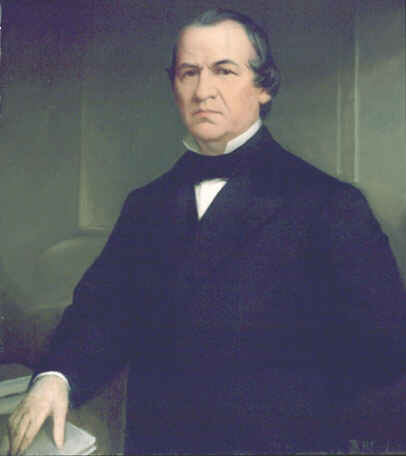 1929
Ángel Lizcano y Monedero, pintor español. 1929
Ángel Lizcano y Monedero, pintor español.
1914 Jean Jaurès, asesinado en París, sociólogo, filósofo, y político
socialista francés.
1906 Ferdinand von Wright, Swedish French artist, dies on his
84th birthday.
1896 Christian
Wiener, mathematician.
1888 Frank Montague Holl, British Social
Realist painter born on 04 July 1845. — LINKS
— Deserted
— A
Family at Prayer
1886 Franz Liszt, compositor y pianista húngaro.
1875 Andrew
Johnson, 66, in Tennessee. 17th US President; he succeeded Abraham
Lincoln and was the only president before Clinton to face impeachment
proceedings. Johnson [portrait, after 1866, by Washington Bogart Cooper
(1802-1889) >] was born on 29 December 1808. When he was
3 his father died. Andrew Johnson never attended school, he was apprenticed
to a tailor at the age of 10. He taught himself to read and, after he
married, his wife taught him the basics of an education. He organized
a Working Man's party in 1828. In 1830 he was elected mayor of Greenville,
Tennessee, went on to the state legislature, then to the state senate.
In 1843 he was elected to the US Congress. In 1853 he was elected governor.
In 1857 the legislature elected him to the US Senate, where, a slave
owner himself, he was pro-slavery. But he opposed secession and on 04
March 1862 Lincoln named Johnsor Military Governor of Tennessee (which
had seceded and only by summer 1863 was completely under Union control),
which office he assumed on 12 March. Johnson was nominated for Vice President
by the Republican convention on 07 June 1864 and was inaugurated with
Lincoln (whose 2nd term it was) on 04 March 1865. Lincoln's 14 April
1865 assassination made Johnson President. On 29 May Johnson granted
a general amnesty to most Confederates. His lenient attitude towards
the rebels brought him into open conflict with Congress, which he accused
of “rebellion” and which overrode his vetoes. After Johnson,
on 12 August 1867 removed Secretary of War Edwin M. Stanton without the
consent of the Senate (required by the Tenure-of-office bill bassed in
March 1867), the House of Representatives impeached him, 126 to 17, on
03 March 1868. The Senate trial ended with votes on 16 May and 26 May
1867, 35 guilty to 19 not guilty, which, falling just short of a 2/3
majority, failed to convict Johnson. His term as president ended in March
1869. At the beginning of 1875, the Tennessee legislature narrowly elected
him to the US Senate.
1863 William Henry Knight, British artist born on 26 September
1823.
1826 El maestro Cayetano Ripoll, ejecutado por hereje, en Valencia,
en el último auto de fe de los realizados en España.
1820 Carl Friedrich Zimmerman, German artist born on 31 March
1796.
1819 Jurriaan Andriessen, Dutch artist born on 12 June 1742.
1811 Miguel Hidalgo y Costilla, 58, Catholic priest "father
of Mexican independence", executed by Spanish firing squad.
1776 Francis Salvador, a plantation owner from South Carolina,
first Jew to die for American independence, killed in a skirmish with
the British.
1760 Adrien Manglard, French artist born on 12 March 1695.
1726 Nicolaus(II)
Bernoulli, mathematician.
1693 Willem Kalf, Dutch painter born in the period of 1619 to
1622, specialized in Still
Life. — MORE
ON KALF AT ART “4” JULY — LINKS
— Still
Life with Silver Jug — Still-Life
with a Late Ming Ginger Jar — Still-Life
with a Nautilus Cup _ detail
— Still-Life
with Drinking-Horn — Still-Life
with Lemon, Oranges and Glass of Wine — Still-life
(with ornate whachamucallit) _ detail
(wine glass and peach) |
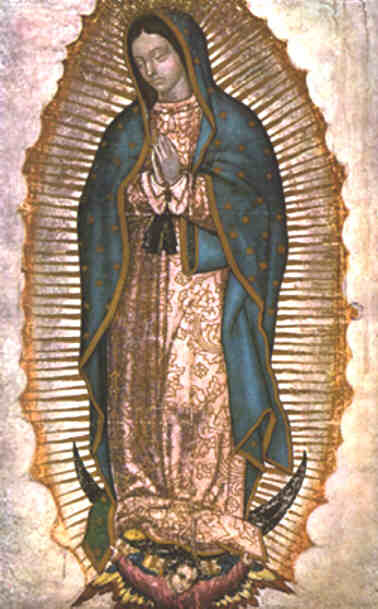 On
a July 31:
On
a July 31: 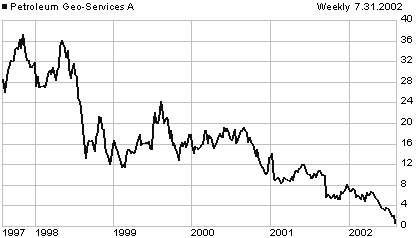 2002
Petroleum Geo Services (PGO) is downgraded by Merrill Lynch from Long
Term Strong Buy to Long Term Neutral. On the New York Stock exchange
its stock drops from the previous close of $2.14 to an intraday low of
$0.47 and a close of $0.56. PGO had traded as high as $10.84 on 22 August
2001 and $38.41 on 03 November 1997. [< 5~year price chart]
2002
Petroleum Geo Services (PGO) is downgraded by Merrill Lynch from Long
Term Strong Buy to Long Term Neutral. On the New York Stock exchange
its stock drops from the previous close of $2.14 to an intraday low of
$0.47 and a close of $0.56. PGO had traded as high as $10.84 on 22 August
2001 and $38.41 on 03 November 1997. [< 5~year price chart]

 1929
Ángel Lizcano y Monedero, pintor español.
1929
Ángel Lizcano y Monedero, pintor español.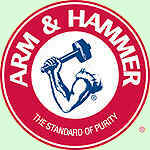
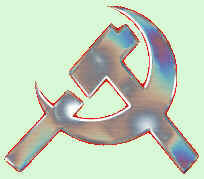 1837
William Clarke Quantraill, Confederate raider known as one of the
most vicious butchers of the American Civil war.
1837
William Clarke Quantraill, Confederate raider known as one of the
most vicious butchers of the American Civil war.